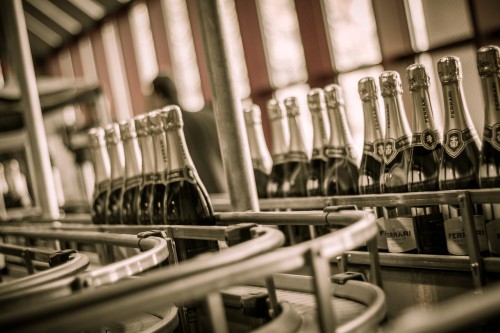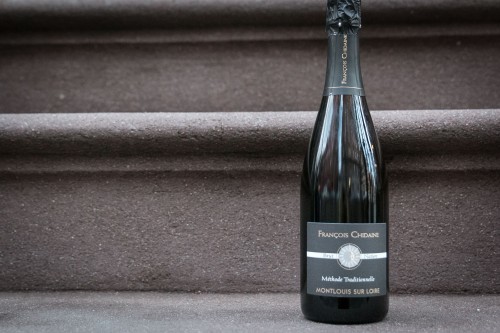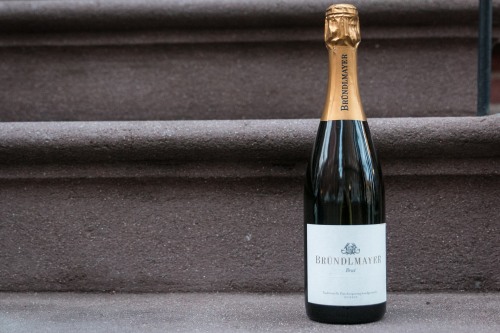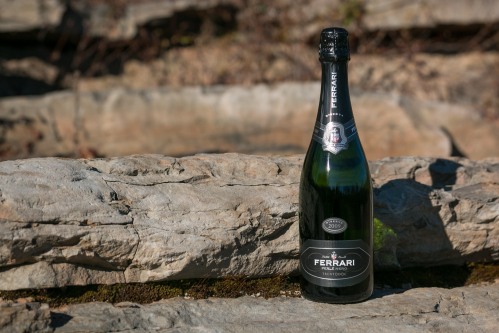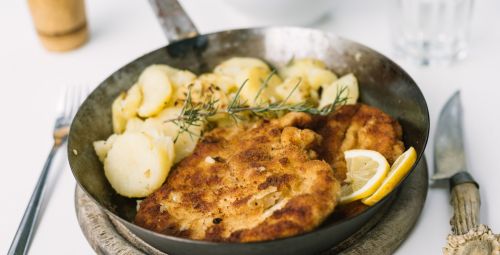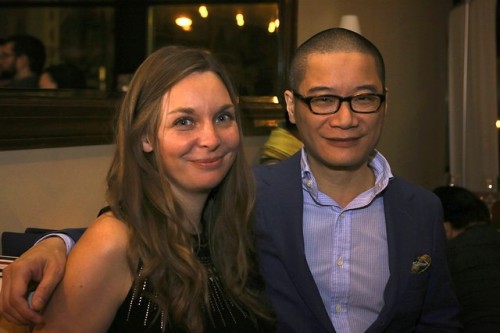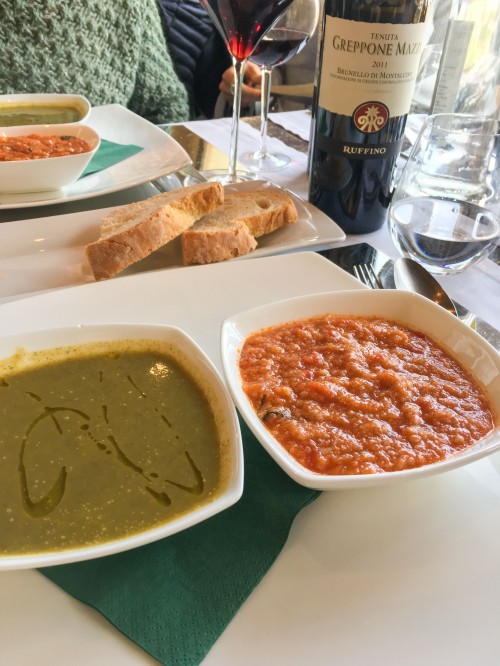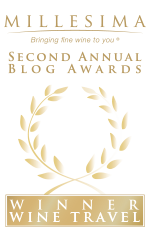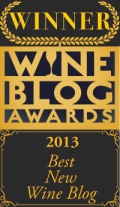If you missed my USA Today article, I’ve reposted it here for your convenience.
Pop, sigh, fizz. The stats are in: Americans love bubbles, having embraced them not only for celebrations but as a year-round drink. Last year, for example, sparkling wine sales in the U.S. grew by 25 percent. Of course, no occasion proves more appropriate for sparklers than the turning over of a new year. As you reach for bottles to celebrate the close of 2017, consider sipping beyond the popular categories of Champagne and Prosecco. High-quality and good value alternatives come from every corner of the world nowadays. So, if 2018 begins with a pledge to broaden your horizons, you can start with the fizz in your glass.
- Burgundy, France: Domaine Francois Mikulski, Crémant de Bourgogne
If the best Champagne is made from Pinot Noir and Chardonnay, and Burgundy produces the finest still wines from those grapes, shouldn’t Burgundy have the potential to make wonderful sparkling wine? Well, it does, and it’s called Crémant de Bourgogne. Crémant refers to the category of French bubbles made with the same technique as Champagne, but from outside the Champagne region. Mikulski, a vigneron from Meursault, has some of the finest vineyard holdings in the village, and while his still wines are hard to find, his affordable Crémant (around $24) can still be tracked down around the U.S. Made from 50% Pinot Noir, 35% Chardonnay, and 15% Aligote, the wine is aged for 18 months on the lees, and provides a perfect jumping off point for discovering the category. The wine shows purity of fruit, lovely mineral notes, and a creamy full mousse.
- Loire Valley, France: Chidaine, Brut Nature Methode Traditionelle 2015
Like Burgundy, Loire Valley, too, makes superb fizz. But the white grape that dominates the sparklers of this long, river-hugging region is not Chardonnay but Chenin Blanc. Within the appellation of Montlouis-Sur-Loire, across from Vouvray, works and lives François Chidaine. A biodynamic farmer who strives for transparency and authenticity in his wines, Chidaine is revered by many wine lovers and professionals. Every year in small quantities he bottles a 100 percent sparkling Chenin Blanc. He foregoes the final dollop of sweetness, known as dosage, to make a fully dry ‘Brut Nature’. The result: a crisp, mineral-driven wine with a pretty nose and palate of white flowers, pear, and citrus, on a lengthy finish.
- Sussex, England: Ridgeview, Bloomsbury Brut 2014
Once the new kid on the block, British fizz has fast proven itself in a competitive category, winning prestigious awards that confirm it’s here to stay. In fact, a changing – warming – climate almost guarantees a long lifespan for the relatively nascent region of Sussex, England. The local climate and limestone soils are akin to Champagne, almost 90 miles south. Cool nights and an overall cooler climate, allow the grapes to retain their bright, sharp flavors even when fully ripe, making it an ideal growing area for the classic Champagne trio: Chardonnay, Pinot Noir, and Pinot Meunier. Ridgeview is a leading producer and one of the easier brands to find in the United States. The Bloomsbury Brut, a blend of all three grapes, has a fine mousse and great finesse, with lively green apple, white peach and lemon notes on the long finish.
- Franciacorta, Italy: Ca’ del Bosco, Cuvee Prestige NV
A competition has long been brewing between Italy’s leading sparkling wine regions. Producers located in Lombardy’s Franciacorta naturally declare themselves to be the finest producers of high-quality Metodo Classico, or sparkling wine made in the traditional (Champagne) method. The wines reflect the style, complexity and quality of the premier French region, but taste very much of place. The appellation of Franciacorta falls within the province of Brescia in the hills just south beyond Lake Iseo in Northern Italy. Thus, a cooler climate near a moderating lake allows for Chardonnay and Pinot Noir grapes, plus Pinot Blanc, to thrive. Internationally respected brand Ca’ del Bosco is easily recognizable by it golden cellophane wrapping, but it’s the juice inside that earns admiration. The Cuvee Prestige is a blend of the region’s three typical grapes, the Pinot Blanc adding a touch of floral fragrance. Fine bubbles, flavors of apple, lemon, and apricot, and flashy packaging, make this a great choice for impressing dinner guests.
- Western Cape, South Africa: Saltare, Brut Reserve NV
If consumers were asked about their impressions of South African wine, they might offer “Chenin Blanc,” “Bordeaux-like reds,” or maybe “Pinotage” but few would likely reference Methode Cap Classique, or MCC for short. MCCs are South Africa’s answer to Champagne. They are high-quality, traditional method sparkling wines that have become so good, they deserve greater global recognition. Yet while they’re easy to find in situ, only a handful make it to the American market. Fortunately, one of the best small producers has a great importer who gets her wine to US shelves. Owner-winemaker Carla Pauw of Saltare wines, named after the Latin word for “to dance,” largely focuses on sparkling, producing a Brut Reserve from grapes sourced in the Western Cape. This bottle is one of her more mature sparklers, with a minimum of 36 months on the lees. This extended aging contributes a fuller body, complexity, and a long, toasty finish.
- Mosel Valley, Germany: Dr. Loosen, Sparkling Riesling Sekt
German sparkling wine goes by the name Sekt. Given Germany’s most important grape is Riesling, it’s logical that this aromatic white grape provides the base for most fizz. But sparkling Riesling can prove an unusual taste for those unfamiliar with it; hence, consider starting with an approachable example, from both a flavor and pocketbook standpoint. Enter Dr. Loosen from the Mosel Valley. The Loosen estate has been in the family for 200 years, with some of Germany’s best-rated vines within the family portfolio. The business is currently run by Ernst Loosen, who has taken quality standards to new heights while still delivering great value from his wines. Specifically, the Dr. L Riesling, an entry-level sparkler conveying the elegant, bright fruit flavors derived from the Mosel’s famous steep slate soils, sells for an attractive price. At 8.5% alcohol, and medium sweetness levels, it’s an easy quaffing wine, too.
- Kamptal, Austria: Bründlmayer, Brut Sekt
Americans familiar with Sekt likely associate it with Germany, but Austria makes their own version. Grapes typically include Riesling, Chardonnay, Pinots Blanc and Gris, but it’s the indigenous grape Grüner Veltliner that makes Austrian fizz distinct. Located in the famous wine region of Kamptal, Weingut Bründlmayer produces several variations on Sekt. The Brut, made in the traditional method, blend the latter four mentioned white grapes, and gives fine Champagne a run for its money. Offering trademark bottle aged notes of yeasty toastiness, flavors flow into apple, quince, and lemon zest on the creamy palate. A slight peppery note, characteristic of Grüner, reveals itself in the long, crunchy finish. This is an excellent bottle from a well-known producer that provides a good introduction to Austrian bubbles.
- Penedès, Spain: Raventós, i Blanc De La Finca 2014
Most consumers who know Spanish sparkling wine think of Cava. There are several prolific brands offering good, entry-level value. But one family has sought to elevate the category beyond the supermarket and into fine wine territory. That family is Raventos, a lineage boasting winemaking traditions reaching back to 1497. In fact, they are credited with producing the first Cava in 1872. However, in recent years, the family has become synonymous with controversy as their focus on organic farming, utmost quality, and terroir-driven expressions has led them to break from the Cava DO to pursue a new appellation, Conca del Riu Anoia. Fundamental to the Raventos philosophy is the use of indigenous grapes in their wines. Those varieties, Xarel-lo, Parellada, Macabeo, make up the blend in the de la Finca, an exceptional traditional method wine that sees a minimum aging period of three years.
- Trentino, Italy: Ferrari, Perle Nero 2009
As awareness of styles other than Prosecco grows, and wine drinkers continue to trade up – often drinking less but better – Trentino provides the obvious next stop in Italy. Tucked into the mighty Dolomites of the north, the area’s sparkling appellation TrentoDOC covers traditional method wines called metodo classico. These mountain bubbles are racy, mineral-soaked expressions delivering precision and elegance as a result of their cool-climate, higher altitude origin. The founding father of fizz in Trentino is Giulio Ferrari, who brought the technique of Champagne production to his village in 1902. Ferrari today has grown into a powerhouse producer by Trentino standards, although production’s a drop in the bucket compared to the big houses in France. Ferrari makes easy to find, standout wines in all price tiers, including the “Perle” line which is a vintage expression. “Nero” references the sole use of red grapes, like Blanc de Noir, which gives the wine a deeper, richer, berry-scented palate.
- Russian River Valley, California: J Vineyards & Winery, Cuvée 20 Brut NV
As America’s foremost wine state, it should come as no surprise that California produces sparkling wine from myriad regions. However, bubble lovers know the best examples come from cooler growing areas. Why? Brisk air and chilly nights preserve acidity and tension. That’s why vineyards further north in an otherwise warm state, like those in the Russian River Valley, are best suited to the style. One pioneering and widely available producer from Northern California is J Vineyards and Winery. Founded in 1986, J has earned a reputation as one of the best sparkling-focused houses in the U.S. They work with classic Champagne grapes and follow the same traditional method bottle fermentation and aging processes. Their signature sparkler, assembled from their coolest vineyards, is Cuvée 20, a delicious non-vintage brut with 24 months of aging that imbued toasted nut notes to the lively, lemon-custard evocative wine.

